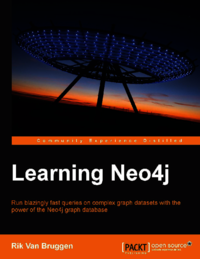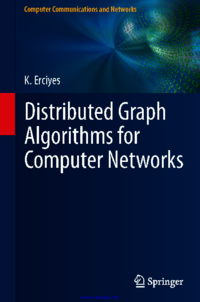Etiqueta "Graph"
Se han encontrado 2 Coincidencias
Learning Neo4j
Learning Neo4j. Run blazingly fast queries on complex graph datasets with the power of the Neo4j graph database
95 Visitas | 79 Descargas | 2015-11-05 19:49:40 | pecarrazana
Who this book is for: If you are an IT professional or developer who wants to get started in the field of graph databases, this is the book for you. Anyone with prior experience with SQL in the relational database world will very quickly feel at ease with Neo4j and its Cypher query language and learn a lot from this book.

Distributed Graph Algorithms for Computer Networks
Distributed Graph Algorithms for Computer Networks
113 Visitas | 115 Descargas | 2015-12-11 18:15:55 | pecarrazana
Distributed systems consisting of a number of autonomous computing elements con- nected over a communication network that cooperate to achieve common goals have shown an unprecedented growth in the last few decades, especially in the form of the Grid, the Cloud, mobile ad hoc networks, and wireless sensor networks. Design of algorithms for these systems, namely the distributed algorithms, has become an important research area of computer science, engineering, applied mathematics, and other disciplines as they pose different and usually more difficult problems than the sequential algorithms. A graph can be used to conveniently model a distributed sys- tem, and distributed graph algorithms or graph-theoretical distributed algorithms, in the context of this book, are considered as distributed algorithms that make use of some property of the graph that models the distributed system to solve a problem in such systems. This book is about distributed graph algorithms as applied to computer networks with focus on implementation and hopefully without much sacrifice on the theory. It grew out of the need I have witnessed while teaching distributed systems and algo- rithms courses in the last two decades or so. The main observation was that although there were many books on distributed algorithms, graph theory, and ad hoc networks separately, there did not seem to be any book with detailed focus on the intersection of these three major areas of research. The second observation was the difficulty the students faced when implementing distributed algorithm code although the con- cepts and the idea of an algorithm in an abstract manner were perceived relatively more comfortably. For example, when and how to synchronize algorithms running on different computing nodes was one of the main difficulties. In this sense, we have attempted to provide algorithms in ready-to-be-coded format in most cases, showing minor details explicitly to aid the distributed algorithm designer and implementor
Contribuir
Usted puede contribuir con Libros UCLV, es importante para nosotros su aporte..
Contribuir